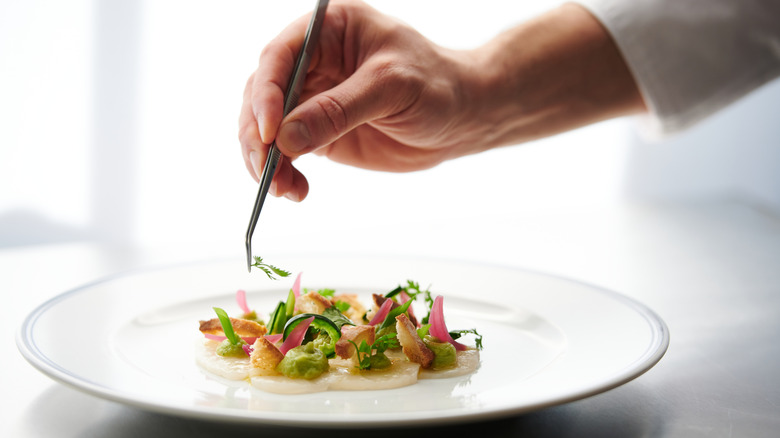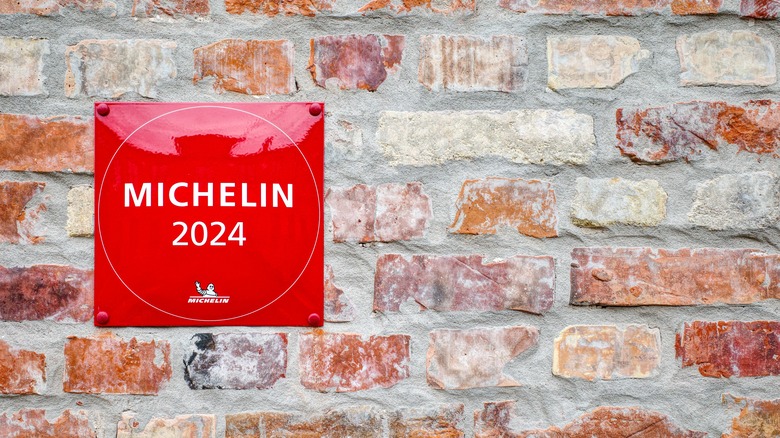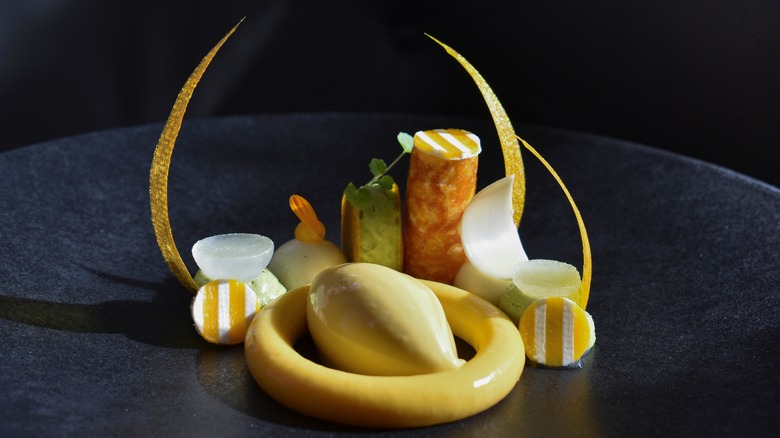How Does A Restaurant Really Get A Michelin Star?
If you watch enough food TV, you're bound to hear mention of Michelin stars. In documentary-style shows like "Chef's Table" on Netflix, Michelin stars are held up as the pinnacle of culinary achievement for many of the featured chefs. In fictional shows like FX's "The Bear," striving for a star spurs Carmy and his band of kitchen misfits to visit Michelin-starred restaurants on a quest for inspiration in Chicago (where they also visit a Restaurant Depot, but that's another story).
All of this talk may lead you to wonder who is in charge of handing out these coveted stars. What does a chef need to do to curry favor with the powers that be? The process, as it turns out, is time-honored, extensive, and secretive. The Michelin guide, which oversees star ratings, sends inspectors to select restaurants as secret diners, reconvenes to debate, and hands out stars when the guide is published each year. In the culinary industry, a star is like an Oscar (though arguably better, as acclaim helps dictate menu prices). Interestingly enough though, the stars weren't always so shiny, and the guide came from humble beginnings.
The Michelin guide and the tire company are one in the same (sort of)
In the early 1900s, the founders of the Michelin tire company in France published the first Michelin guide. Their plan was simple – provide motorists with information, encourage them to drive more, and tire sales will soar. The original guide was modest, offering maps, advertisements, resources on tire repair, a list of fueling stations, and as a bonus, a list of restaurants to drive to. In the 1920s, the Michelin brothers decided the guide was in need of a makeover, so they classed it up by removing the ads, organizing the restaurants, and focusing on more fine dining establishments.
The first (single) stars weren't awarded until 1926, and in 1931, the three-star system used today was born. Throughout much of its history, the Michelin guide focused on French restaurants, where the majority of stars reside today (specifically Paris, a hub for starred restaurants, as well as a favorite of Anthony Bourdain's –– Le Dôme Café). It wasn't until 2005 that the Michelin guide began to cover the United States. Now, diners can seek out Michelin-starred spots around the world, including most major European cities, U.S. cities like Chicago, New York City, San Francisco, and Washington DC, South American hotspots like Rio de Janeiro and São Paulo, and a variety of destinations across Asia, from Seoul to Singapore.
Restaurants must impress a panel of inspectors to earn a star
To be eligible for Michelin star consideration, a restaurant must reside within the covered regions specified by the Michelin guide. So, if the amazing local restaurant near you is starless, they may not have been snubbed — they probably weren't in the running. The guide also accepts applications for consideration as well as recommendations from guide readers. Unlike James Beard awards that are handed out to places like Chicago's Lula Café and even individuals, Michelin stars are only awarded to restaurants.
The evaluation process is conducted yearly, across different seasons and mealtimes, with thousands of inspectors visiting qualified restaurants under a shroud of secrecy. Diners generally consider the food, including taste, quality, consistency, value, technical flair, as well as the entire experience, including emotions conveyed through the meal, creativity, and memorability. However, service and decor are not factored in. After initial evaluations, each region meets with a director to debate their ratings until a consensus is met. Then, the sacred culinary text is published, and restaurant crews around the world find out if they've earned a star (or more).
Per the Michelin guide, one star corresponds to restaurants with a unique menu and excellently executed food. Two stars takes it up a notch, bringing all of the quality you'd expect from a one star, plus additional inspiration and personality. Finally, a three-star rating is reserved for food as art, where chefs are clearly at the top of their game, and serving edible masterpieces.


